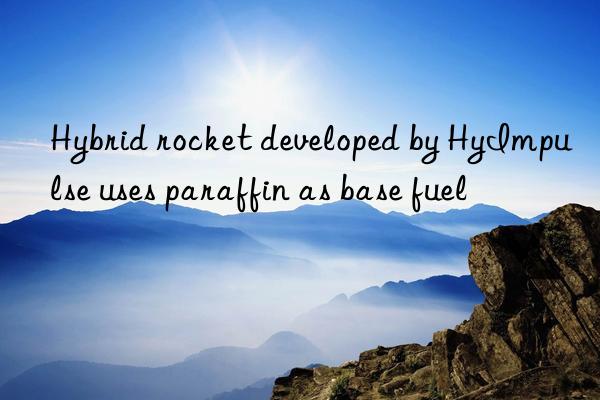
<img src="https://www.only-better.com/upload/202009/1601342327794543.jpeg" data-width="500" data-height="264" / alt="Image keywords This month, launch startup HyImpulse successfully tested its 16,800-pound hybrid rocket engine at the German Space Agency's Lampoldshausen base.
HyImpulse, headquartered in Neuenstadt, Germany, is developing its SL1 three-stage launch vehicle, which is designed to carry payloads of up to 500 kilograms to sun-synchronous orbit.
This lightweight launch vehicle will be powered by 12 16,800-pound hybrid rocket engines, including 8 in the first stage, 4 in the second stage, and 4 smaller but identical third stage engine.
The hybrid rocket engine developed by HyImpulse is powered by paraffin-based fuel and liquid oxygen.
The engine is designed to use simpler hardware than liquid fuel systems while providing greater safety than rigorous solid fuel engines.
HyImpulse stated that the first hot combustion test on September 15 confirmed that the performance of the paraffin/liquid oxygen hybrid rocket engine is equivalent to that of liquid hydrocarbon-based fuel.
This performance is achieved using a propulsion system that is simpler than a liquid fuel rocket engine, with high reliability and low cost.
The safety of rocket launches has always been a problem.
Currently, solid propellants combine fuel and oxidizer to form a material that, once ignited, must continue to burn in a controlled manner or the rocket may explode.
Stanford University professor Brian Cantwell proposed an approach to develop a hybrid propulsion system that would store the fuel in solid form and the oxidizer in liquid form, so that if a launch problem occurs, the rocket engine can slow down to Avoid disaster. "Our fuel is based on paraffin, which is one of the oldest fuels known to man," Cantwell said.
The concept of hybrid rockets is not new. During the Soviet Union's first rocket launch on August 17, 1933, a team of scientists tested a small hybrid launcher based on liquid oxygen and gasoline in a gel form.
The rocket reached 400 meters, but could not be scaled up, and the team continued to develop large liquid rockets that would eventually be used to launch Sputnik.
Twenty years ago, Arif Karabeyoglu, then a Ph.D. student at Cantwell, made progress when he discovered that paraffin wax burned fast enough to release the huge thrust needed to launch large rockets. Since then, Cantwell's lab and others around the world have been developing paraffin-based hybrid rocket engines.
Conceptually, Cantwell’s hybrid engine can be compared to a large, hollow candle, and the wick is usually hollow.
Once the oxidant is sprayed into the core and ignited, a thin layer of paraffin melts along the surface of the core, releasing a wave of rapidly burning droplets. Turn off the oxidant flow and the candle goes out.
At NASA's Ames Laboratory, scientists developed and tested a paraffin-mixed fuel prototype rocket, the "Peregrine Rocket."
The rocket is 35 feet tall, about 2 feet in diameter, and produces about 15,000 pounds of thrust.
Cantwell said NASA is considering launching hybrid rockets from Mars, in part because paraffin can withstand temperature fluctuations more easily than solid fuels.
He explained that the temperature on Mars can be as low as minus 100 degrees Fahrenheit at night and soar to 20 degrees Fahrenheit during the day.
In this extreme case, the solid propellant often develops cracks, causing the engine to burn unevenly and explode.
Designers can insulate solid rockets from these temperature changes with heat shields, but this adds weight, and that extra weight could be used for more scientific research. Cantwell said paraffin wax is less susceptible to temperature fluctuations, making hybrid systems lighter and safer.
Introduction to paraffin:
It is understood that: paraffin is a colorless to white translucent lump. Pure paraffin is white and contains Paraffin with impurities is yellow, tasteless and odorless, and has a greasy feel. Soluble in ether, chloroform, benzene, petroleum ether, volatile oil or various fatty oils, slightly soluble in ethanol. Chemically stable, it does not react with acids, alkalis, oxidants, or reducing agents. It will turn yellow under ultraviolet irradiation and can burn and decompose. It is stable at room temperature.

 微信扫一扫打赏
微信扫一扫打赏

